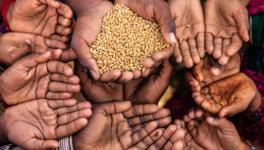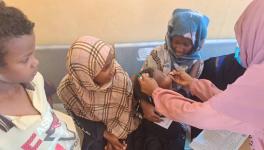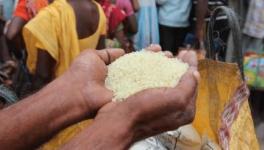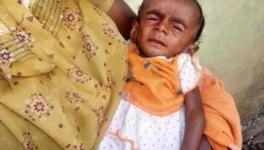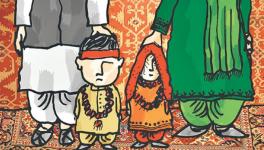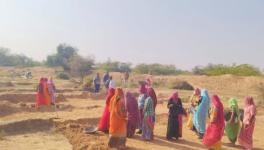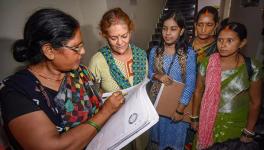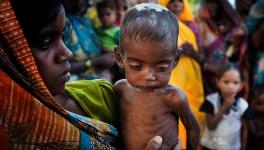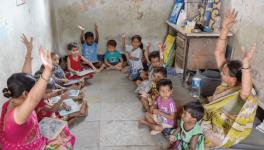8.82 Lakh Under-5 Deaths in India in 2018: UNICEF Report
“Money. I am not able to buy food to feed the child,” a 25-year-old mother was quoted saying in UNICEF's The State of the World’s Children report for the year 2019, talking about the barriers she faces in feeding her baby well. A 16-year-old Indian girl said, “We lack money here to stay healthy … Our family is unable to find good jobs.” Another 13-year old pointed out, “Food is important for us so that we are able to study well.”
The report, which was released earlier this week, pointed out that in India, malnutrition caused 69% of deaths among children under the age of five years in India in 2018. Even though the median under-five mortality rate per 1,000 deaths in the country is lower than several other countries at 37, in absolute numbers India reported 8.82 lakh child deaths in the age bracket in the year 2018, the highest in the world. Nigeria, with 8.66 lakh deaths closely trailed India, followed by Pakistan (4.09 lakh).
According to the report, the number of neonatal deaths in the year 2018 was 5.49 lakh, again the highest in the world. In several countries like Uruguay, Georgia, Greece and Grenada, this number was zero. In India, neonatal deaths constituted 62% of under-five deaths. The report also pointed out that the number of deaths among children between the ages of 5 and 14 years was also highest in India at 1.43 lakh, followed by Nigeria (1.10 lakh).
Also read: India Ranks 102 on Global Hunger Index 2019, Scores Lower Than All Neighbours
Several international and national studies and surveys released in the recent past have pointed out the poor state of children in India. The Comprehensive National Nutrition Survey 2016-2018 released by the Ministry of Health and Family Welfare pointed out that only 6.4% of Indian children between the ages of 6-23 months receive minimum adequate diet. India ranked 102nd among 117 countries on the Global Hunger Index 2019, falling behind all its neighbouring countries excluding Bhutan, for which adequate data was not available.
This is disheartening, as the government has allocated over Rs 9,000 crore to the Poshan Abhiyan, the scheme to eradicate malnutrition by 2022. The UNICEF report pointed out, “In India, national and state governments implemented a multi-pronged strategy to support breastfeeding, including large-scale programmes, effective capacity-building initiatives, strong partnerships, community-based action, and communications campaigns.” Despite this, India still remains one of the countries with severe malnutrition among children and women, with the highest rate of child wasting in the world. According to the report, more than half the women in the country are anaemic.
According to the report, 22% of Indian children born between the years 2010 and 2018 were underweight at birth, and there was early initiation of breastfeeding for only 41% of the infants. It also pointed out that 55% of Indian children under the age of two years had zero vegetable or fruit consumption.
It said that 38% of Indian children below 4 years of age were stunted. This proportion was highest among the poorest 20% of the population, at 51%. The proportion, at 22%, was significantly lower for the richest 20% of the population. A total of 27% of the children between the ages of 5-19 years were thin or severely thin, while 7% were overweight. Among the women of the country, 24% were underweight, while 51% were anaemic.
Also read: India Will Not Meet Nutrition Goals by 2022 at Current Rate, Says Study
As per UNICEF’s report, while the percentage of out-of-school children was just 3% (male) and 2% (female) for primary education between the years 2010-2018, this proportion was significantly higher for upper secondary education, at 47% for boys, and 49% for girls. The completion level also decreased as children moved towards secondary education. The completion rate at primary level was 92% and 91% for boys and girls respectively, while the proportion of children completing upper secondary level dropped to 46% and 40%. It pointed out the proportion of children in grade 2 or grade 3 achieving minimum proficiency level of reading was 25%, and minimum proficiency level in Mathematics was 28%. According to the report, 7% of Indian women got married by the age of 15, while 27% got married by the age of 18. The proportion of men who got married by the age of 18 was a much lower 4%.
Get the latest reports & analysis with people's perspective on Protests, movements & deep analytical videos, discussions of the current affairs in your Telegram app. Subscribe to NewsClick's Telegram channel & get Real-Time updates on stories, as they get published on our website.









